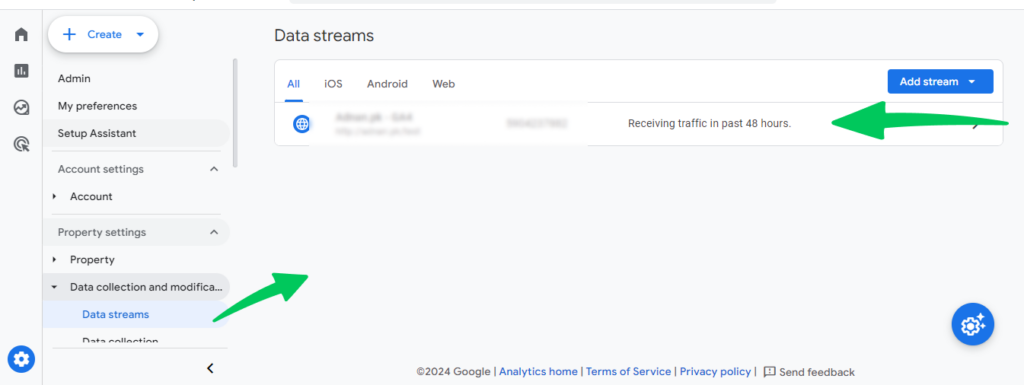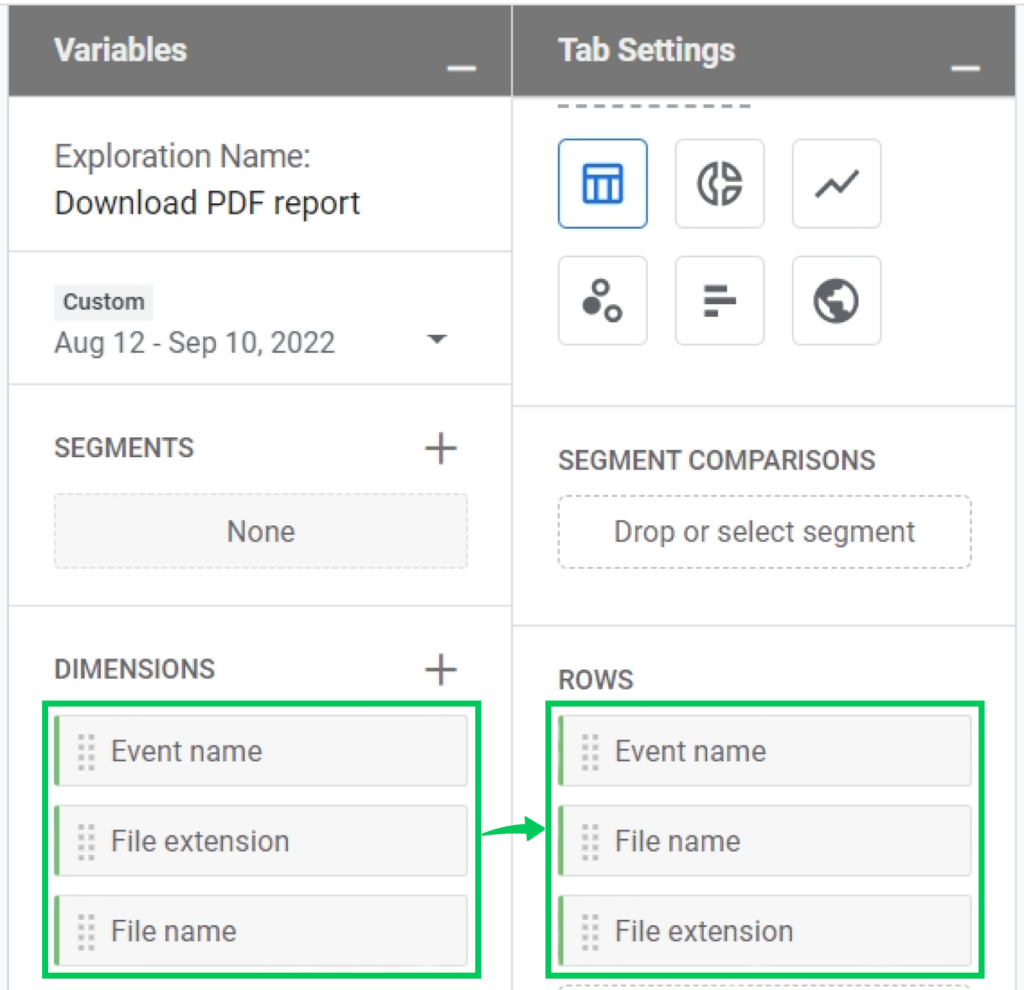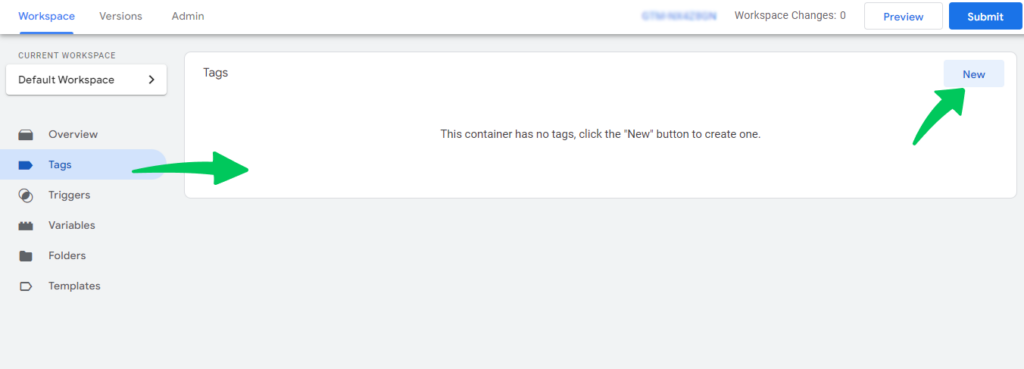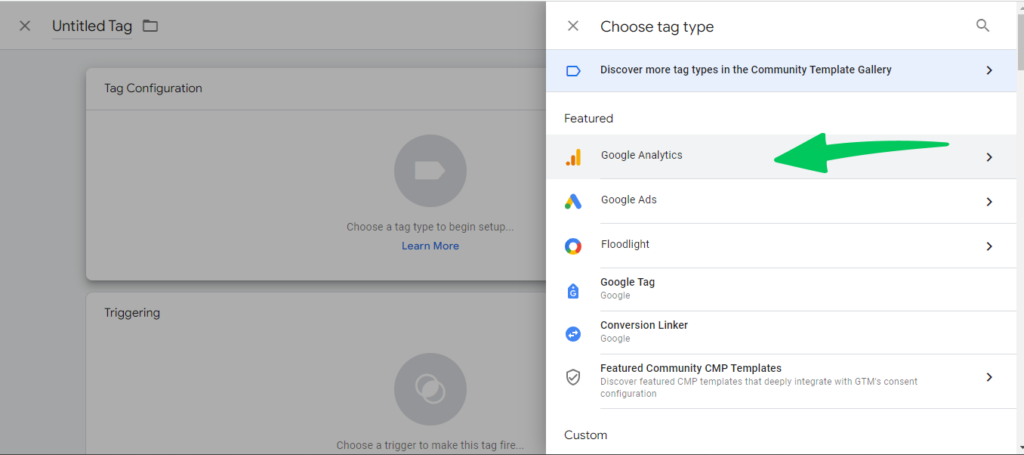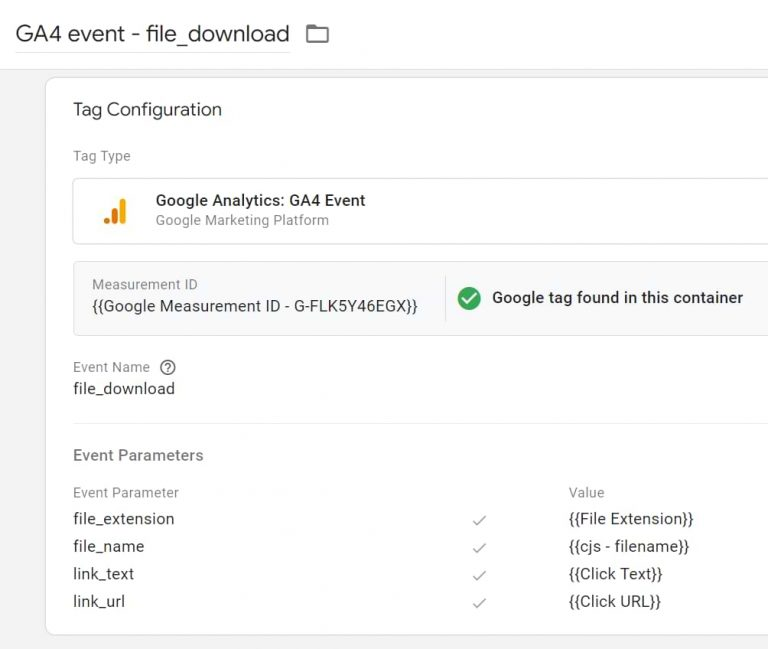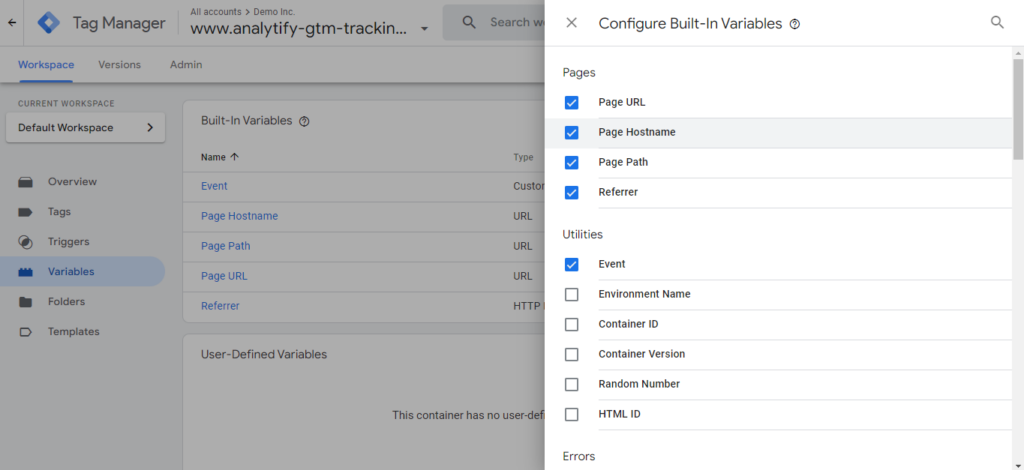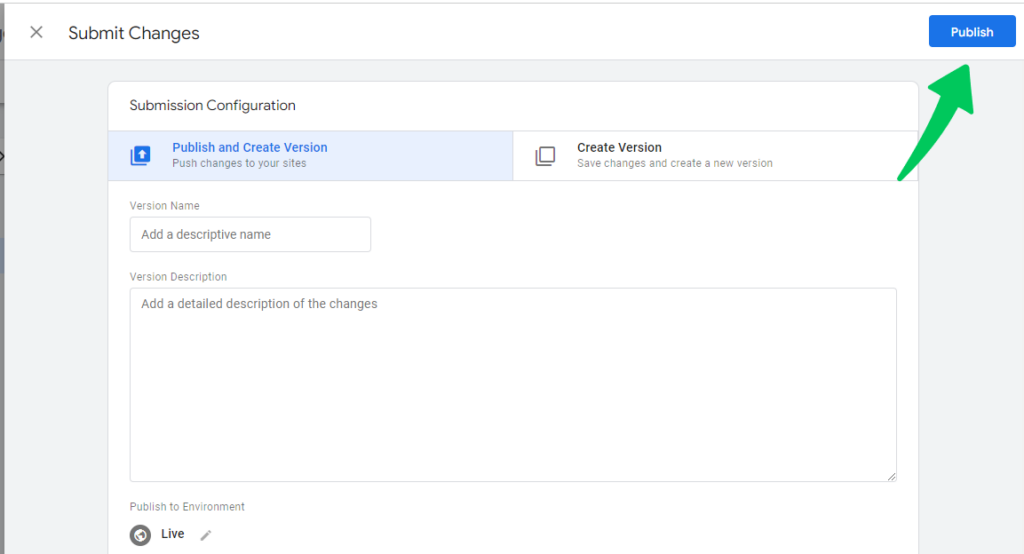
How to Track File Downloads in Google Analytics 4 (2025)
Are you interested in tracking file downloads in Google Analytics 4, especially PDFs and other downloadable files?
Today, we will explain how to track file downloads in Google Analytics 4, ensuring you grasp the essentials and apply them effectively.
In this article, we will cover what file download tracking in GA4 is all about, different file types recognized by GA4, the benefits of tracking file downloads, and step-by-step methods to track file downloads with and without Google Tag Manager (GTM).
Whether you’re in marketing, education, or any other sector, understanding how to track downloads can provide valuable insights into user engagement and content effectiveness.
Let’s get started!
GA4 File Download Tracking (TOC):
What is Download Tracking in Google Analytics 4?
Download tracking in GA4 refers to the process of monitoring how often users download files from your website. This can include PDFs, images, videos, and more. Properly tracking these downloads helps you understand user behavior and measure the effectiveness of your content.
Many people believe any click on a downloadable link counts as a tracked download, but GA4 has specific criteria for what constitutes a download.
Key Points:
- GA4 defines downloads based on specific interactions.
- Misconceptions: Not all downloadable link clicks are tracked unless set up correctly.
Which Type of Files does GA4 Recognize as Downloads?
When discussing GA4 file downloads, it’s crucial to understand that GA4 distinguishes between user interactions. For instance, simply clicking on a link might not be tracked unless the link leads to a file type recognized by GA4 as a downloadable item.
Not all file types are treated equally when it comes to GA4 file downloads. Understanding which files GA4 recognizes as downloads is key to setting up effective file download tracking.
Common File Types Recognized by GA4
Here is a list of common file types recognized by Google Analytics 4 (GA4) :
| File Type | Extension |
| PDFs | |
| Images | .jpg, .png, .gif, .bmp, .svg, .webp |
| Videos | .mp4, .mov, .avi, .wmv, .flv, .mkv |
| Documents | .doc, .docx, .xls, .xlsx, .ppt, .pptx, .txt, .csv, .rtf |
| Audio | .mp3, .wav, .aac |
| Archives | .zip, .rar, .tar, .gz |
This list covers a broader range of commonly used file types that might be recognized and tracked by GA4.
GA4 can track these files automatically if properly configured. This ensures you’re capturing valuable data on a variety of content types.
Example:
Imagine you have a resource section on your website where visitors can download e-books, whitepapers, and product manuals in the form of PDFs. PDF analytics can help you to know how often each type of file is downloaded and helps you understand what content resonates most with your audience.
Focusing on PDF tracking and other file types can help you transform your content strategy to meet your visitors’ needs in a better way. For instance, if PDF downloads are significantly higher than video downloads, you may create more PDF resources in the future.
Benefits of File Download Tracking
Tracking file downloads offers several benefits, making it a crucial part of your Google Analytics 4 (GA4) strategy. Here are some reasons why you should set up file download tracking:
1. Measure Content Engagement
By monitoring GA4 file downloads, you can see which files are popular among your users. This helps you understand which content types resonate most with your audience.
2. Optimize Content Strategy
With insights from PDF tracking and other file types, you can refine your content strategy. For example, if PDF downloads are high, you might decide to produce more PDF resources.
3. Improve User Experience
Tracking downloads allows you to identify and enhance the resources users find most valuable, ensuring a better user experience.
4. Data-Driven Decisions
Accurate GA4 file download reports enable you to make informed decisions based on actual user behavior rather than assumptions.
5. Enhance Marketing Efforts
Knowing which downloadable content performs best can help you tailor your marketing campaigns and improve conversion rates.
How to Track File Downloads in Google Analytics
Now, let’s explore how to track file downloads in Google Analytics 4 (GA4). We’ll look at two methods: with and without Google Tag Manager (GTM).
Comparison of Tracking Methods
| Method | Ease of Setup | Customization | Reporting |
| Enhanced Measurement (GA4) | Easy | Limited | GA4 Interface |
| Google Tag Manager (GTM) | Moderate | High | GA4 Interface |
| WordPress Plugin (e.g., Analytify) | Easy | Moderate | Integrated within WordPress |
1. File Download Tracking within GA4 (Enhanced Measurement)
The simplest way to track file downloads in GA4 is by using the enhanced measurement feature. This method doesn’t require GTM and can be set up directly in GA4.
Example:
Imagine you run a website with multiple downloadable resources, such as PDFs, images, and videos. By setting up the enhanced measurement in GA4, you can automatically track these downloads and gather data on user interactions without additional configurations.
Steps to Set Up Enhanced Measurement:
- Navigate to Admin: Go to the Admin >> Data streams section in your GA4 property.
- Data Streams: Select the data stream you want to configure.
- Enhanced Measurement Settings: Next, go to Enhanced Measurement Settings.
Note: Make sure the Enhanced Measurement option is on.
You will see different options. Toggle on the option for file downloads. And then Save the settings.
Limitations of Enhanced Measurement
While the enhanced measurement feature is convenient, it has some limitations:
- Limited customization options.
- May not track all types of file interactions.
- Enhanced measurement focuses on predefined events such as page views, scrolls, outbound clicks, site searches, video engagement, and file downloads. Custom events unique to specific business needs require manual setup.
- Enhanced measurement may not allow the addition of custom parameters or values to the tracked events, limiting the depth of data you can collect and analyze.
- For instance, enhanced measurement falls short if you want to track clicks on specific buttons, form submissions, or interactions with dynamic content. Custom event tracking must be configured manually.
- Enhanced measurement supports tracking of common file types like PDFs, images (.jpg, .png, .gif), and videos (.mp4, .mov). However, it might not recognize or track interactions with less common or industry-specific file types such as CAD files (.dwg, .dxf), software executables (.exe), or proprietary formats.
Where to Find File Downloads Data in GA4
Once you’ve set up file download tracking, you’ll need to know where to find the data. GA4 offers multiple ways to view this information.
Check Standard Reports
You can find file download analytics in GA4 by navigating to GA4 Reports >> Engagement >> Events.
Custom Reports to find File Downloads in GA4
You can find specific file download events in GA4 using the exploration report.
You need to navigate to GA4 Reports >> Explore and click on the + sign to create a new exploration.
Then select the Dimensions in the Variables section as per requirement, such as with file names.
Then, drag and drop these dimensions in the Rows in Tab Settings.
Then you can check the file download report similar to the one below screenshot:
By understanding these reporting options, you can effectively analyze the data and gain insights into user behavior regarding file downloads.
II. How to Track File Downloads with Google Tag Manager
For those looking to implement more advanced tracking, using Google Tag Manager (GTM) for file download tracking offers greater flexibility and customization.
Here’s a step-by-step guide to set it up.
Step 1: Set Up a New Tag in GTM
- Go to your GTM account and click on “Tags”.
- Create a new tag.
- And choose “Google Analytics: GA4 Event” as the tag type.
Step 2: Configure the Tag
- Name your tag (e.g., “GA4 File Download Event”).
- Set the Configuration Tag to your GA4 Configuration.
- In the Event Name field, enter file_download.
Step 3: Set Up Triggering
- Create a new trigger and choose “Click – Just Links”.
- Configure the trigger to fire on certain conditions, such as clicks on links ending in .pdf, .docx, etc.
Step 4: Add Variables
- Add relevant variables to capture additional information about the downloads, such as the file URL or file name.
- Enable built-in variables like Click URL and Click Text.
Step 5: Publish Your Container
- After configuring the tag and trigger, publish your GTM container to make the changes live.
Your container will be published successfully. And you will be navigated to Version summary page to check the published summary.
Advantages of Using GTM to Track File Downloads
- Customization: Allows for detailed and specific tracking setups.
- Flexibility: Easily modify triggers and tags to fit different scenarios.
- Scalability: Manage tracking across multiple sites or properties from one GTM account.
Examples
Company: ABC Online Store
Objective: Track user interactions to optimize marketing and improve user experience.
Without GTM:
- Setup and changes require developer time.
- Manually managing tags can lead to errors.
With GTM:
- Customization:
- Example: Track “Add to Cart” clicks easily.
- Benefit: No need to modify website code.
- Flexibility:
- Example: Quickly add or modify tags for marketing campaigns.
- Benefit: Adapt to different scenarios fast.
- Scalability:
- Example: Manage tracking for multiple sites from one account.
- Benefit: Consistent data collection.
Using GTM for GA4 file download events, you can gain more precise insights and tailor your tracking to meet specific needs. This method is particularly beneficial for complex websites with diverse downloadable content.
Bonus: Track GA4 File Downloads on WordPress
Plugins can simplify file download tracking for WordPress users. One of the best plugins is Analytify, which integrates with Google Analytics and offers robust tracking features, including file download tracking.
| Feature | Analytify | Manual GA4 Setup |
| Ease of Setup | Easy (plugin-based) | Moderate (requires configuration) |
| Tracking Customization | High (Select file types) | High (but with GTM) |
| Reporting | Integrated within WordPress | Requires GA4 interface |
Using Analytify, WordPress users can streamline their file download tracking process, ensuring accurate and comprehensive data collection without complex setups.
- Go to your WordPress dashboard.
- Navigate to Plugins >> Add New.
- Search for “Analytify” and install the plugin.
- Activate the plugin after installation.
It will automatically track file downloads and show you the list in the events tracking dashboard.
Analytify Dashboard Features
- Comprehensive Reports: View download statistics directly from your WordPress dashboard.
- Real-Time Tracking: Monitor stats as they happen.
- User-Friendly Interface: Easy to navigate and configure settings.
- Ease of Use: No need for complex coding or manual setup.
- Integrated Analytics: See all your Google Analytics data, including GA4 file download reports, within WordPress.
You can navigate to Analytify Dashboard >> Conversions >> Events Tracking to check detailed tracking of links and clicks tracking.
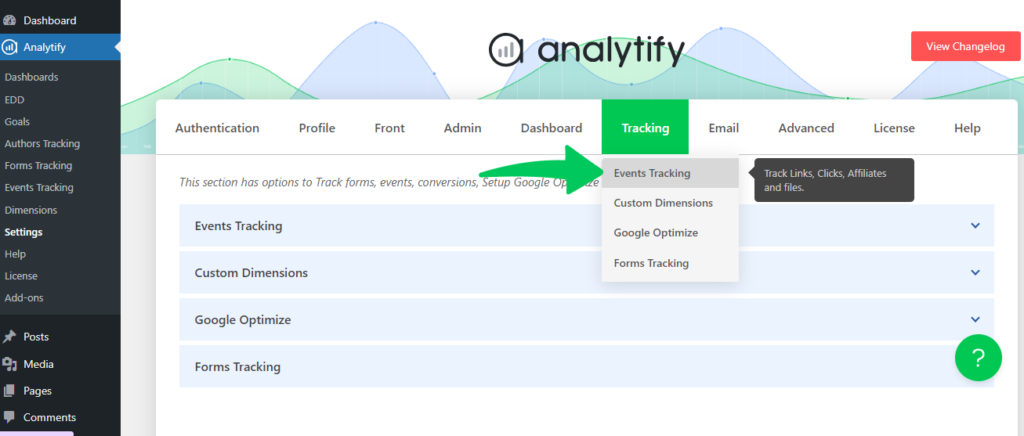
You will see detailed analytics below including the download links.
GA4 File Downloads FAQ
1. What are the prerequisites for tracking file downloads in GA4?
To track file downloads, you need an active GA4 property and proper permissions to configure data streams and enhanced measurement settings.
2. How do I verify that file download tracking is working in GA4?
You can verify tracking by checking the GA4 file download event in the real-time reports or by navigating to the Events section under Engagement.
3. Can I track multiple file types with GA4?
Yes, GA4 supports tracking multiple file types, such as PDFs, documents, images, and videos. You can configure this in the enhanced measurement settings or through GTM.
4. What are the limitations of using enhanced measurement for tracking downloads?
Enhanced measurement is easy to set up but offers limited customization. It might not track all file interactions and lacks detailed configuration options.
5. How can I use Google Tag Manager (GTM) to enhance file download tracking?
GTM allows for advanced tracking setups, offering greater flexibility and customization. You can set up specific triggers and tags to capture detailed data on file downloads.
6. Is there a way to track file downloads on WordPress without coding?
Yes, plugins like Analytify enable you to easily track file downloads on WordPress. These plugins integrate with GA4 and offer user-friendly interfaces for configuring tracking settings.
Final Thoughts
We’ve covered a comprehensive guide on how to track file downloads in Google Analytics 4 (GA4), including PDFs and other types of downloadable files.
Key Takeaways:
- Understand What Counts as a Download: Knowing the specifics of what GA4 considers a download helps set up accurate tracking.
- Recognize File Types: Ensure your most important file types, like PDFs, are being tracked.
- Use Enhanced Measurement for Simplicity: Great for basic tracking without needing GTM.
- Leverage GTM for Advanced Tracking: Offers more detailed and customizable tracking options.
- Utilize WordPress Plugins: For a seamless tracking experience within WordPress, plugins like Analytify can simplify the process.
We hope this guide helped you understand how to track file downloads in Google Analytics 4.
You may also like to read Google Tag Manager Best Practices.
Have you implemented file download tracking on your site? What challenges did you face, and how did you overcome them? Share your experiences and insights in the comments below!


